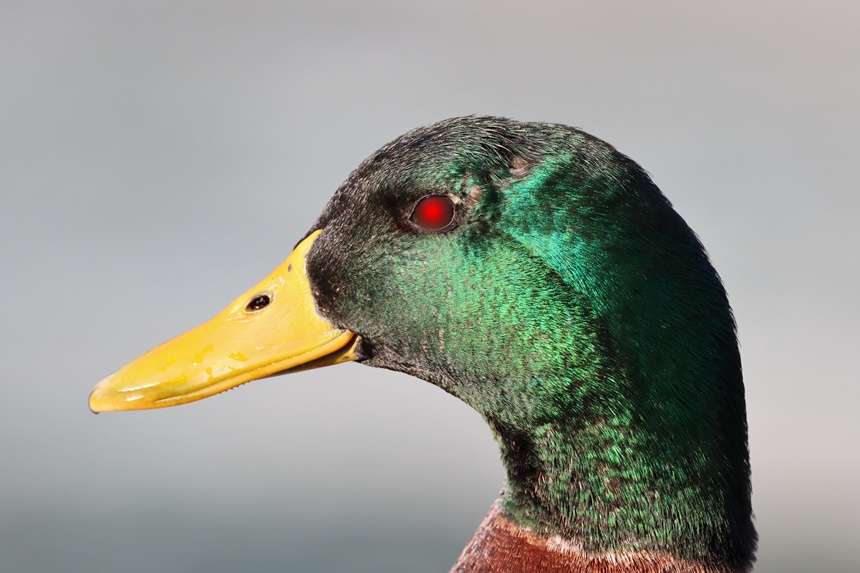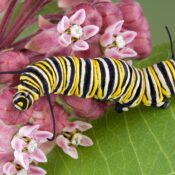Although my francophone wife was glad I learned basic French, she often finds my pronunciation a source of mirth, like when I say connard, a harsh insult you don’t use in polite company, instead of canard, or duck. But where mallard ducks are concerned, the two are related: the drake or male is an absolute miscreant at times.
Mallards, while mostly migratory, can be found at any time of year in all 50 states, as well as in Puerto Rico and the U.S. Virgin Islands. A so-called dabbling or puddle-duck, mallards tip their heads under shallow waters to feed on mollusks, worms, and aquatic plants, as opposed to diving after prey. They also eat seeds and grasses.
The Darwinian principle “survival of the fittest” is not about who wins the antler fight or arm-wrestling contest. Fitness means being well-suited to one’s environment so as to live long enough to reproduce and thus pass on one’s DNA. The mallard, perhaps the most recognizable duck in North America with the drake having a glossy green head, bright orange bill and prim white collar, may be the fittest species ever. Not only are their numbers on the rise, they’ve become adept at sharing genes with other species.
Unlike with cars, where hybrids are good but rarely free, mallard hybrids are now so common in Hawaii and other places that some duck species native to those regions may disappear. According to the Global Invasive Species Database, “As a consequence [of mallard interbreeding], Mexican duck is no longer considered a species, and less than five percent of…[New Zealand] grey ducks remain.”
The defining trait of a species is usually that it can’t cross with other species to produce fertile offspring. Mallards, it seems, have not read the literature. It’s awkward when nature does that. Mallard hyper-hybridization is due to the fact it “only” evolved a few hundred thousand years ago, recent in evolutionary terms. Animals dating back millions of years have had time to spread out and develop physical and behavioral changes that make them incompatible with once-related species.
Mallard mating strategy, while not responsible for their success, may be emblematic of it. For most bird species, mating is a brief, external event in which the male’s genetic material is passed to the female by the two touching their back ends together in what’s called (by us at least) a “cloacal kiss.” The cloaca is a bird’s all-purpose opening used to pass eggs, feces and whatever, as needed. This PG-13 performance is anything but romantic.
Certain ducks went to the other extreme, dabbling in X-rated, violent sex. Depending on species, puddle-duck males can have members longer than their bodies, which certainly puts things in perspective for us guys. Also, it is common that more than one mallard drake, whose penis is “only” about a fourth of his body length, copulates with each hen, sometimes at the same time. This occasionally results in injury or death of a female.

This seems like a terrible way to run a species, with drakes committing femicide. But from a group-survival perspective, there is some sense to it. Females have been observed rounding up guy-ducks who seem to have nothing better to do. The reason a mallard hen might barnstorm the pool hall or local watering-hole to get drakes to follow her has to do with her lifespan. In contrast to the Canada goose, known to survive 10-25 years in nature, wild mallards live only three years on average. This means a high percentage of females, which begin breeding at age two, will mate only once in their life. Multiple copulations, which may put a hen in jeopardy, will at least ensure her eggs will be fertile.
And girl-ducks have a secret, if bizarre, strategy – once a hen gets the attention of the guys, she may not be able to shoo them off, but she can pick the duckling-daddy. If a male does not suit her, she will guide the loser-drake’s penis into a vaginal dead-end until he is done, a copulation fake-out. But if she fancies a drake, the lucky guy will be allowed to go the whole nine yards. So to speak – I doubt it’s that long.
Obviously, mallards don’t need our help finding food. In fact, it’s usually not a good idea to feed waterfowl. This can lead to increased water pollution, as well as some illnesses that affect humans. So-called “swimmers’ itch,” a water-borne parasite carried by ducks that can afflict beachgoers, is a fairly benign example. Mallards are a primary long-distance vector of bird flu, as they excrete a lot more of the virus than other ducks, yet seem not to succumb themselves. Given their global distribution, huge numbers, and adaptability to human surroundings, they are the perfect link to carry pathogens like H5N1 between wild and domestic birds and people.
The short lifespans of mallards drove the species to develop strategies that include harsh male behavior. Humans have no such excuse. It would be ducky if we guys could promise never to act like a connard, but that may not be realistic in a complex world. Perhaps we could at least try to become bilingual.
Become a Saturday Evening Post member and enjoy unlimited access. Subscribe now




Comments
Whack off their heads. Gut ’em. Clean ’em. Put ’em in a crock pot, doused with BBQ Sauce. Let cook on low setting for 12 hours. Then you have some good eating.
Wow! I guess the Saturday Evening Post really does cover everything! Imagine my surprise to be brought up to speed on the freaky sex lives of ducks !! And now we all know! Lol!
This is one fascinating strange look into some outrageous behavior of male mallard ducks. He just looks so innocent and friendly from the pictures here. I know I had no idea until this very unusual report that has truly spun my head right ’round like a record, Paul.